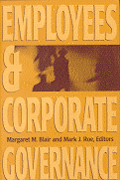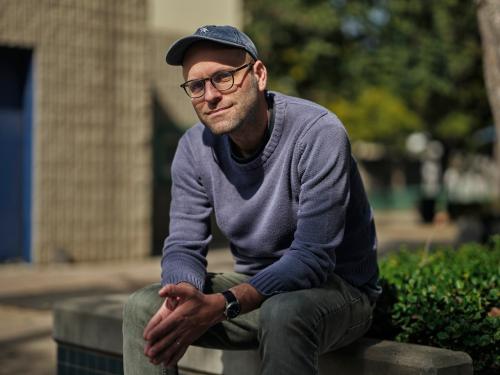Something is happening in Midtown Atlanta. Georgia Tech’s city-centered campus has become one of the nation’s leading destinations for corporate research centers. Over the last decade, Tech Square, the eight-square-block area in Midtown designed to facilitate private and public research ventures, has attracted the corporate research centers of 12 Fortune 500 companies, including AT&T, Panasonic, and Coca-Cola, as well as hundreds of small technology startups. And just recently, NCR, one of the largest U.S. electronics companies, moved its global headquarters from the suburbs to Tech Square, bringing along 3,600 employees.
Midtown Atlanta is an example of the growing trend of companies relocating major research facilities to be near urban universities that provide mixed-use amenities, lively places, and a high density of firms. For example, Pfizer recently moved one of its largest research centers to Kendall Square in Cambridge, blocks from MIT, and Google now has its machine learning research hub in Baker Square in Pittsburgh, near Carnegie Mellon University.
What’s driving companies to relocate near urban universities is the changing role of innovation within the private sector as firms are increasingly relying on external sources to support technology development.
In the past, many large companies tended to innovate in isolation. In the 1960s, for example, DuPont led the world in new polymers, spinning off blockbusters like nylon and Kevlar from its gated research campus in Wilmington, Delaware. Similarly, AT&T’s iconic Bell Labs in Murray Hill, New Jersey, carved out entire new industries through the creation of transistors, lasers, and the programming language C++. The business model of these firms was to make markets, and they were large enough essentially to monopolize the technology categories if successful.
Today, few firms monopolize the technologies on which they rely, and they can no longer absorb the total costs of radical innovation alone. First, technology imitation occurs far more quickly today than in the past, due in part to the global base of technology competitors and the speed of reverse engineering. No ideas are local, and increasingly few are secret. Consider the iPad, first released in March 2010; at the 2011 Consumer Electronics Show, close to a dozen tablets were on display. Second, technology “platforms” undergird new products more than in the past. Basic science in genomics is the platform on which new biological drugs rely; advances in machine learning support the Internet of Things in everything from home appliances to automobiles; and new computational methods manage both power plants and grocery store supply chains. No corporate research center “owns” any of these platforms, but they all must understand and apply advances within them to new products and services.
Together, these trends are forcing firms to buck the age-old binary of “making” technology (often in isolation) or “buying” it (often from afar) in favor of “leveraging and learning.” Ideally, companies leverage the research capacity in platform technologies of universities and learn from clusters of firms, researchers, and others within dense urban neighborhoods. And these neighborhoods aren’t just dense; they are vibrant, high-quality places where post-grads and entrepreneurs actually want to live.
Of course, for this new model to work, universities also have to be interested in the commercial opportunity of their research. While almost all colleges and universities claim to care about commercialization, most continue to incentivize academic publication and do not go far enough to work with firms.
However, when corporate research centers relocate, more often than not it’s to cities that are home to a leading research university that prioritizes private sector engagement. Universities like MIT, Carnegie Mellon, and Washington University have all seen corporate research centers move around their campuses, and it’s not just because they are located in cities. These schools have incentivized commercialization by changing tenure requirements to reward patents, not just publications, starting programs to incubate university startups, and pushing faculty to seek federal grants that support joint research with the private sector.
In Midtown Atlanta, Georgia Tech has served as a catalytic force for the relocation of firm research facilities. Of course, being home to one of the country’s premier engineering colleges helps, as do the real estate investments made by the university to create space for companies. But university efforts to bring research to market are even more important. For example, Georgia Tech is a national leader at spinning off startups: VentureLab, a university-run business accelerator, is ranked second in the world. Georgia Tech’s incubator, the Advanced Technology Development Center, helps create successful startups by connecting entrepreneurs to mentors, capital, and customers. And its Industry Connects program links university startups with Fortune 1000 companies. Because young technology firms often serve as test beds for future products, Georgia Tech has made Midtown Atlanta into an ideal environment for corporate research centers by supporting faculty and student startups and linking them to larger businesses. These schools are also taking great pains to improve the physical realm and animate public spaces to create an environment for creative thinking and collaboration.
What’s happening at Georgia Tech and in Midtown Atlanta is likely a leading indicator of where corporate research is headed. Going forward, firms will only increase their reliance on external sources for technology, and therefore the value of quality places and density will grow. Cities that attract corporate research centers won’t necessarily be the ones offering the largest tax incentives; they’ll be those that have major universities pursuing commercially relevant research and fostering ties with the private sector.
This article originally appeared in the Harvard Business Review on March 01, 2016.








Commentary
Op-edWhy today’s corporate research centers need to be in cities
March 1, 2016